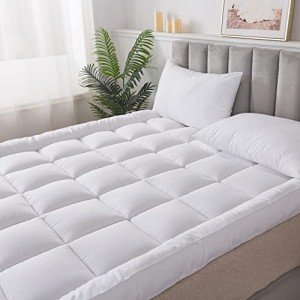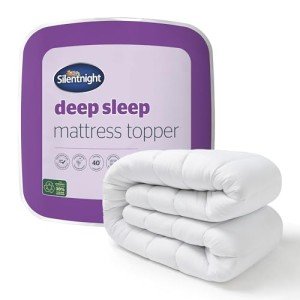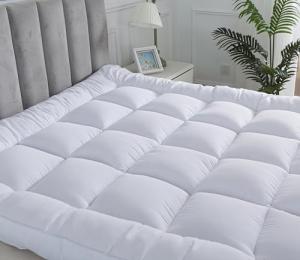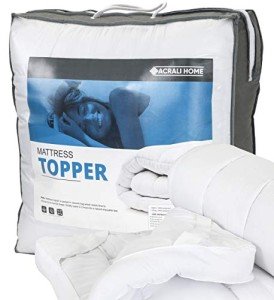When it comes to creating a comfortable sleeping environment, the mattress is only part of the equation. For those with bunk beds, especially in shared spaces like children's rooms or guest accommodations, the addition of a quality mattress topper can elevate comfort levels while also addressing health concerns. This guide delves into the benefits of anti-allergy double mattress toppers for bunk beds, their features, selection tips, and frequently asked questions.
What is an Anti-Allergy Mattress Topper?
An anti-allergy mattress topper is a specialized layer of cushioning that fits over a mattress to enhance comfort while also preventing allergens from settling into the sleeping surface. These toppers are typically made from materials that repel dust mites, mold, and other common allergens. They offer an additional layer of protection, making them ideal for those with allergies or respiratory issues.
Key Features of Anti-Allergy Mattress Toppers
When considering an anti-allergy double mattress topper, it’s important to look for specific features that fulfill both comfort and health needs. Below is a list of features to look for:
- Hypoallergenic Materials: Look for toppers made with materials like memory foam, latex, or specially treated fabrics that repel allergens.
- Breathability: Good air circulation is essential to prevent moisture buildup. Opt for toppers that are designed with ventilation in mind.
- Easy to Clean: Toppers with removable, machine-washable covers make maintenance easy, ensuring that allergens are removed regularly.
- Durability: Choose materials that can withstand wear and tear, especially in a bunk bed environment where movement is common.
- Certifications: Look for certifications such as OEKO-TEX or CertiPUR-US, which guarantee that the materials are free from harmful substances.
Benefits of Using an Anti-Allergy Mattress Topper
Investing in an anti-allergy mattress topper offers numerous benefits, particularly in a shared sleeping space such as a bunk bed. Here are several key advantages:
-
Enhanced Comfort: Mattress toppers are designed to add an additional layer of cushioning, making the sleeping surface softer and more comfortable.
-
Allergen Reduction: These toppers significantly reduce exposure to allergens, which is particularly beneficial for individuals with asthma or other allergic conditions.
-
Temperature Regulation: Quality mattress toppers help regulate body temperature, preventing overheating during the night.
-
Prolongs Mattress Life: A topper can protect your mattress from wear and tear, prolonging its lifespan and performance.
-
Affordable Upgrade: Instead of investing in a new mattress, a topper provides a cost-effective way to enhance comfort and health.
Choosing the Right Anti-Allergy Double Mattress Topper for Bunk Beds
Selecting the right mattress topper is crucial for maximizing its benefits. Consider the following factors:
-
Size and Fit: Ensure the topper fits snugly onto your double mattress. Measure the mattress dimensions to select the correct size.
-
Thickness: A thickness of 2 to 4 inches is generally ideal for comfort without overwhelming the bunk bed's structure.
-
Material Preference: Choose a material based on personal comfort preferences, such as memory foam for contouring support or latex for a bouncier feel.
-
Budget: Mattress toppers vary widely in price. Set a budget that balances quality with affordability.
-
User Reviews: Reading customer reviews can offer insight into the effectiveness and comfort of specific models before making a decision.
Table: Comparison of Popular Anti-Allergy Mattress Toppers
| Brand | Material | Thickness | Price | Features |
|---|---|---|---|---|
| Brand A | Memory Foam | 3 inches | £120 | Cooling gel, machine washable |
| Brand B | Latex | 2 inches | £90 | Breathable, eco-friendly |
| Brand C | Memory Foam | 4 inches | £150 | 10-year warranty, hypoallergenic |
| Brand D | Hybrid | 3 inches | £110 | Supportive, antimicrobial |
Maintenance Tips for Your Mattress Topper
Proper maintenance can extend the life of your anti-allergy mattress topper. Consider the following tips:
- Regular Washing: Wash the removable cover every few weeks to eliminate dust and allergens.
- Spot Clean: For any stains, use a damp cloth and mild detergent.
- Air It Out: Occasionally remove the topper from the mattress to air it out, reducing moisture buildup.
- Use a Mattress Protector: Combining a mattress protector with your topper provides an additional layer of defense against allergens.
FAQs
Q1: Are all mattress toppers hypoallergenic?
No, not all mattress toppers are hypoallergenic. Always check the product specifications to ensure that the materials are designed to repel allergens.
Q2: Can an anti-allergy mattress topper replace my mattress?
While a mattress topper can significantly improve comfort and reduce allergens, it is not a substitute for a good mattress. A topper should be used to complement your existing mattress.
Q3: How often should I replace an anti-allergy mattress topper?
Typically, it’s recommended to replace mattress toppers every 3 to 5 years, depending on the quality and usage.
Q4: Is there a specific thickness that is best for bunk beds?
For bunk beds, a thickness of 2 to 4 inches is generally ideal to avoid overwhelming the bed's structure while providing adequate comfort.
An anti-allergy double mattress topper for bunk beds is a valuable addition, enhancing comfort and safeguarding health. By choosing the right topper based on size, material, and user preferences, individuals can enjoy improved sleep while minimizing allergy symptoms. Regular maintenance ensures longevity and continued effectiveness, making the investment worth every penny. Whether for children, guests, or just an upgrade to personal comfort, these toppers are a step toward better sleep spent in bunk beds.






